On 6 August 1945, at 8:15am, the first nuclear bombing of city took place. The device detonated 600m above the commercial centre of Hiroshima flattening the whole area, with the exception of the skeletal frame of a building which came to be known as the A-Bomb Dome.
This event gave notoriety to the city of Hiroshima as the first example of the devastating effects of nuclear weapons on an urban centre. That was, after all, one of the criteria that led to Hiroshima being placed on the list of potential targets: the flat river valley around the city meant the destructive power of the explosion could be measured without the mitigating influence of hills and mountains.
The other feat of nature that sealed the fate of the city was the perfectly clear weather that day.
We arrived in the early evening via shinkansen from Osaka. On the train we struck up a conversation with a Japanese business man sharply dressed in his suit, who recommended we go for dinner at a building called Okonomi-Mura to experience Hiroshima’s version of okonomiyaki. “Mura” translates as village and this one is made up of 25 eateries spread over 3 floors in a multi-story building, each independently run by its owner.

The whole building has a great atmosphere and is extremely popular with locals who seam to have their own favourite restaurant. We tried out the one called Ron, lured by the infectiously friendly and welcoming demeanour of the of the manager/chef/owner. There was a professional baseball match on TV that evening, local favourites Hiroshima Carp were playing away in Nagoya and almost every restaurant was showing the game on a TV mounted in a corner above the grill. Even if the other patrons spoke as much English as we did Japanese, we were still able to bond over the events of the game, clinking beer glasses for strike-outs and hits. It also helped that the Carp came from behind to win that night.


Hiroshima is known across Japan for its oysters, so naturally we had to go with a typically local okonomiyaki that included some of these meaty monsters.

The effervescent owner/chef at Ron ask that we autograph a polaroid of ourselves and add it to her collection. She was excited to add some faces from the other side of the world in between photos of her regulars in various states of inebriation during their previous visits.


Each restaurant is centred around an L-shaped griddle where your order is made in front of you. The narrow walls and stools to seat only 9 or 10 customers make for a fun and intimate evening with the owner and fellow diners/drinkers. The relatively excellent English spoken by the lady who owns Ron, who translated conversations between locals and tourists, makes for a very memorable visit.

After dinner we went for a walk through the city, appreciating the reprieve from the scorching daytime heat.


Walking around the city, memorials to the atomic bomb victims seem ubiquitous. Some nothing more than a modest stone engraving, others a bit more substantial. Many are dedicated to a specific group of victims. The students and teachers at a school. Employees of a local business. The modern buildings belie the tragic history that came before them, so these memorials serve as reminders to Hiroshima’s current residents and visitors of the human cost of war.


The Genbaku Dome, more commonly known as the Atomic Bomb or A-bomb Dome, is the defining image of the bombing of Hiroshima. The Hiroshima Prefecture Commercial Exhibition Hall was a beloved local landmark with a distinctive, and unique, green domed roof. The hall was used for cultural events, exhibitions and fairs to support the products and people of the prefecture.

The bomb exploded approximately 600 metres above ground and 150 metres southeast of the hall. Everyone inside was killed instantly as the explosion tore the building apart and set fire to what remained. Because the explosion took place almost directly above, the dome managed to absorb more of the blast than an angular roof and some of the supporting centre walls remained standing as the majority of the force was in a vertical rather than horizontal direction. The skeletal dome over the crumbled ruins was one of the only structures not completely obliterated.



For decades public opinions of the dome were divided. Some felt that it should be preserved as a memorial to the bombing, while others thought it should be demolished as a dangerously dilapidated structure evoking very strong and painful memories. As the city was rebuilt, those supporting preservation gathered strength and in 1966, 21 years after the bombing, the city council passed a resolution to preserve the A-bomb Dome which led to a public fundraising campaign that drew support from across Japan and internationally. Several more modern preservation projects have been carried out since to ensure the dome continues to look as it immediately after the bombing.

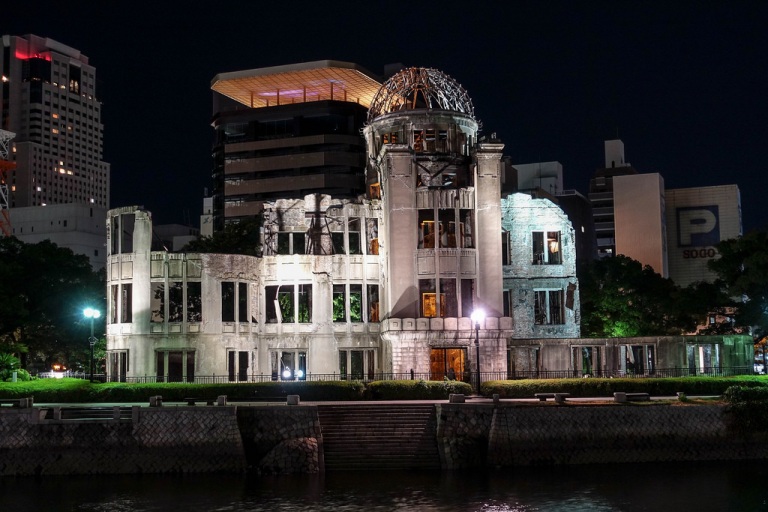
In December 1996 the A-bomb Dome was added to the UNESCO World Heritage register, despite strong opposition from the USA and China who highlighted the suffering caused by Japan before and during World War 2. The USA noted the close relationship they now share with Japan and the two countries’ present-day alliance, but raised concerns about historical perspective saying the events that led to the USA’s use of the atomic bombs to end the war are key to understanding the tragedy of Hiroshima.




The origami crane has become the symbol of peace in Hiroshima. The connection between paper cranes and peace traces back to a young girl named Sadako Sasaki, who was two years old when she was exposed to radiation from the atomic bomb. She had no visible injuries and grew up strong and healthy. However, 9 years later she started to show signs of an illness that was diagnosed as leukaemia. An ancient Japanese legend said says that anyone who folds 1,000 paper cranes will be granted a wish. Believing this would help her recovery, she kept folded them every day until she died, 8 months later.
Sadako’s death inspired the building of a monument to the children killed by the atomic bomb. The Children’s Peace Monument stands in Peace Park, built with funds donated from all over Japan. Over time the story of Sadako spread around the world, and now approximately 10 million cranes are sent to the Children’s Peace Monument every year.

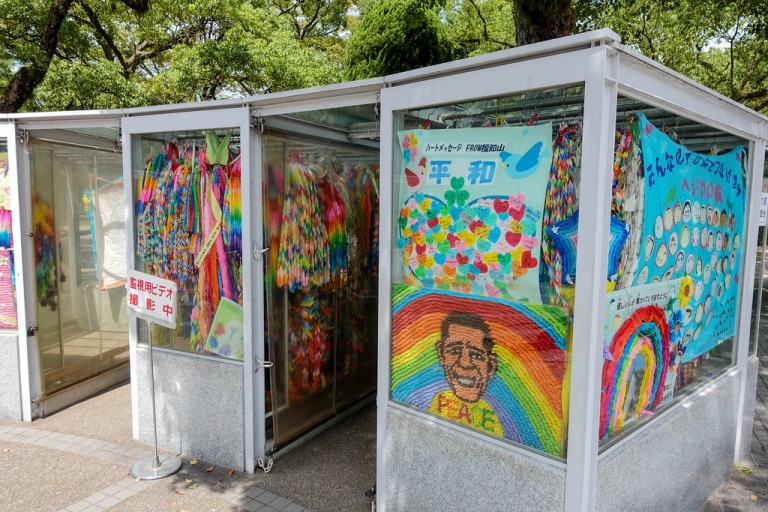





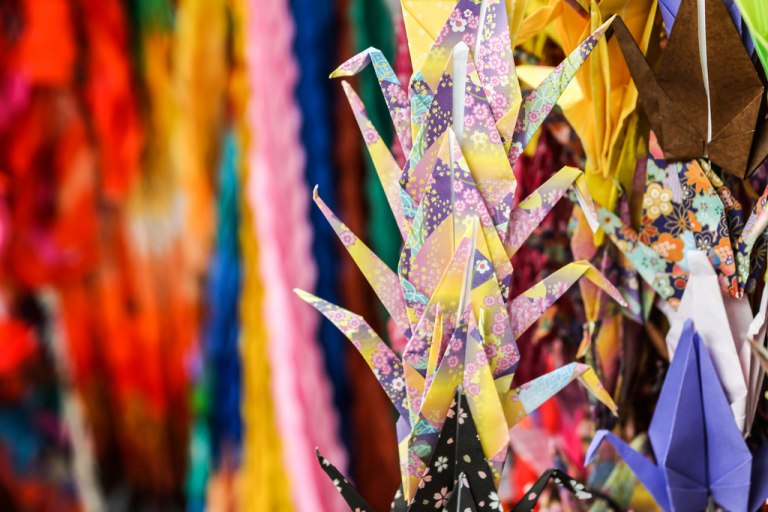

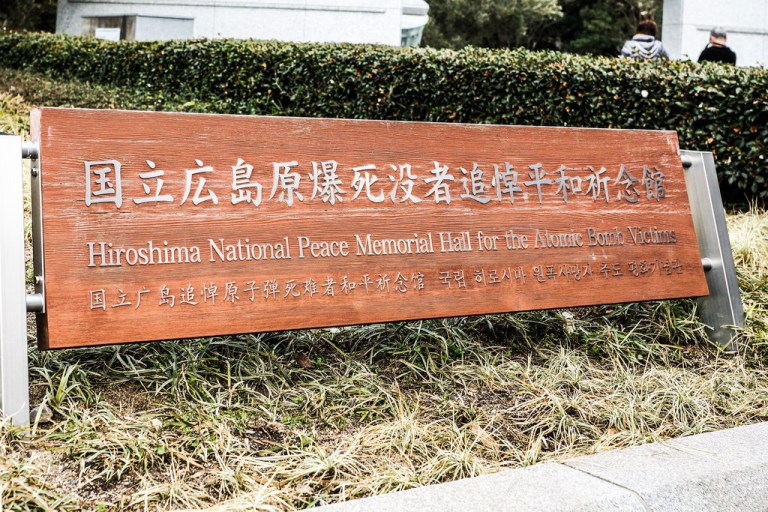
Within the Peace Park, there are two exhibitions worth visiting. The first is the Memorial Hall for the Atomic Bomb Victims, which is built under part of the park. The entrance has a tranquil fountain with a symbol of a clock showing 8:15am.

The wall of the main hall is a 360 degree panorama of the city, stitched from photographs taken in aftermath of the bombing. It’s an astonishing depiction of the total devastation of the city.

The other exhibition is the main Atomic Bomb museum. It contains possessions of some of the victims, photos and other artefacts that give an account of the bombing, the aftermath and the persistent health consequences from radiation exposure that have affected people to the present day.


After visiting the nuclear missile sites in the Dakotas a month earlier, seeing the opposite side of that coin in Hiroshima is a sobering experience.

For dinner our second night we returned to Okonomi-Mura having had such a good time the night before. We tried a different restaurant on one of the other floors, that seemed to be the preference of a famous Japanese band who had numerous photos and autographs up on the wall. There was no baseball game on that night, so it wasn’t quite as festive.

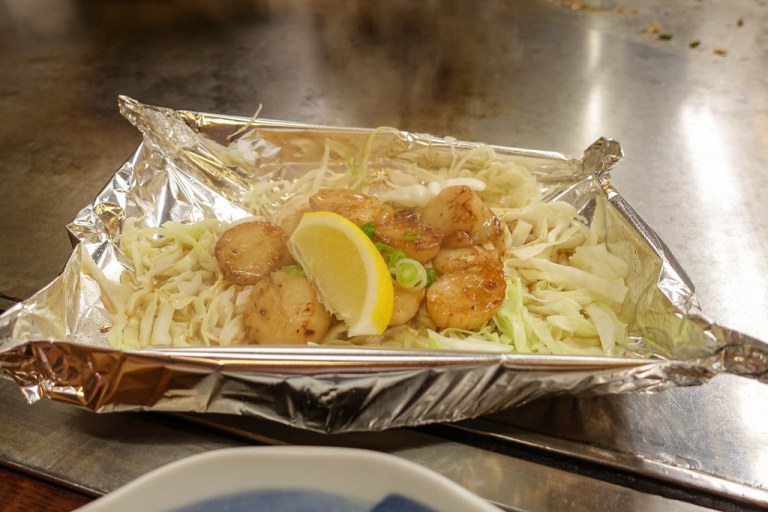





Links
Hotel Sunroute (Hiroshima) – https://www.sunroute.jp/english/
Okonomi-Mura – http://www.okonomimura.jp
Hiroshima Peace Memorial Museum – http://hpmmuseum.jp/?lang=eng

A fascinating insight of what looks like a very valuable experience. Thanks for sharing this with us!
LikeLiked by 1 person